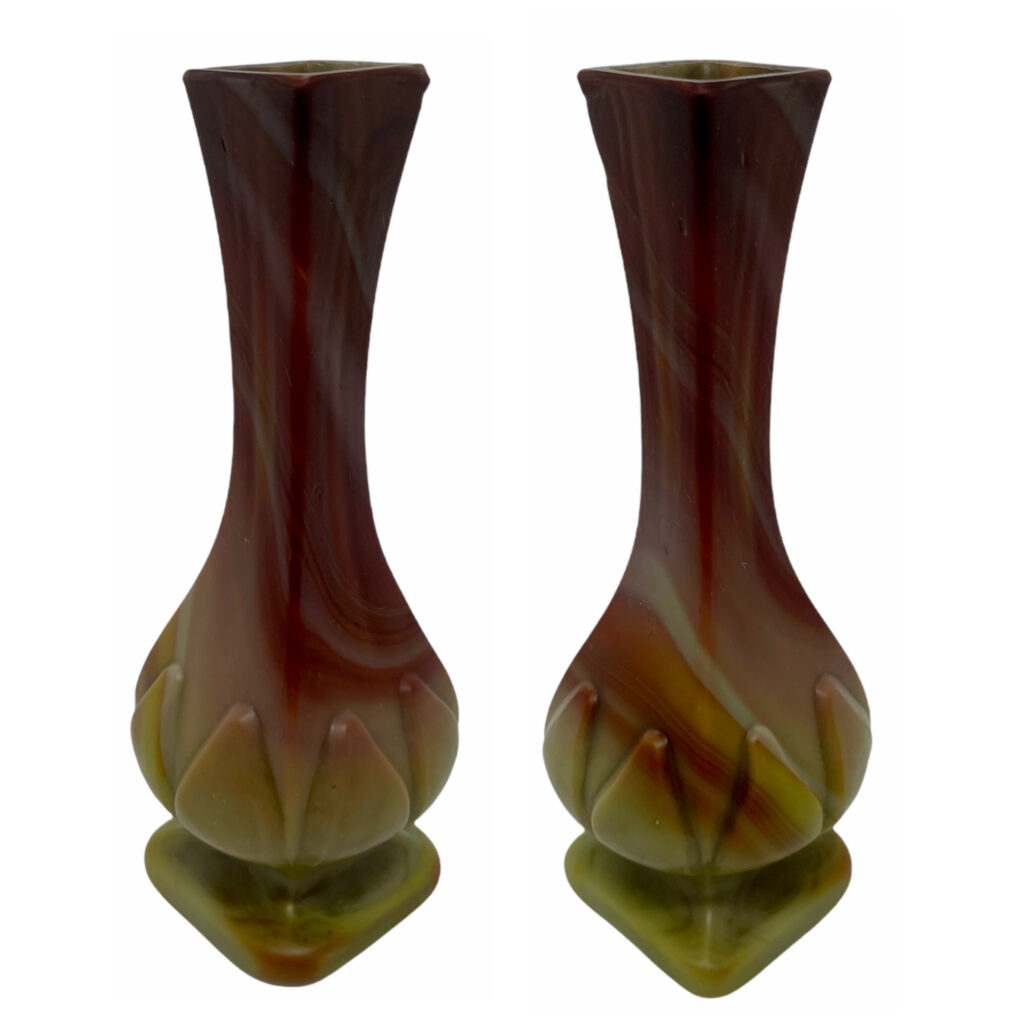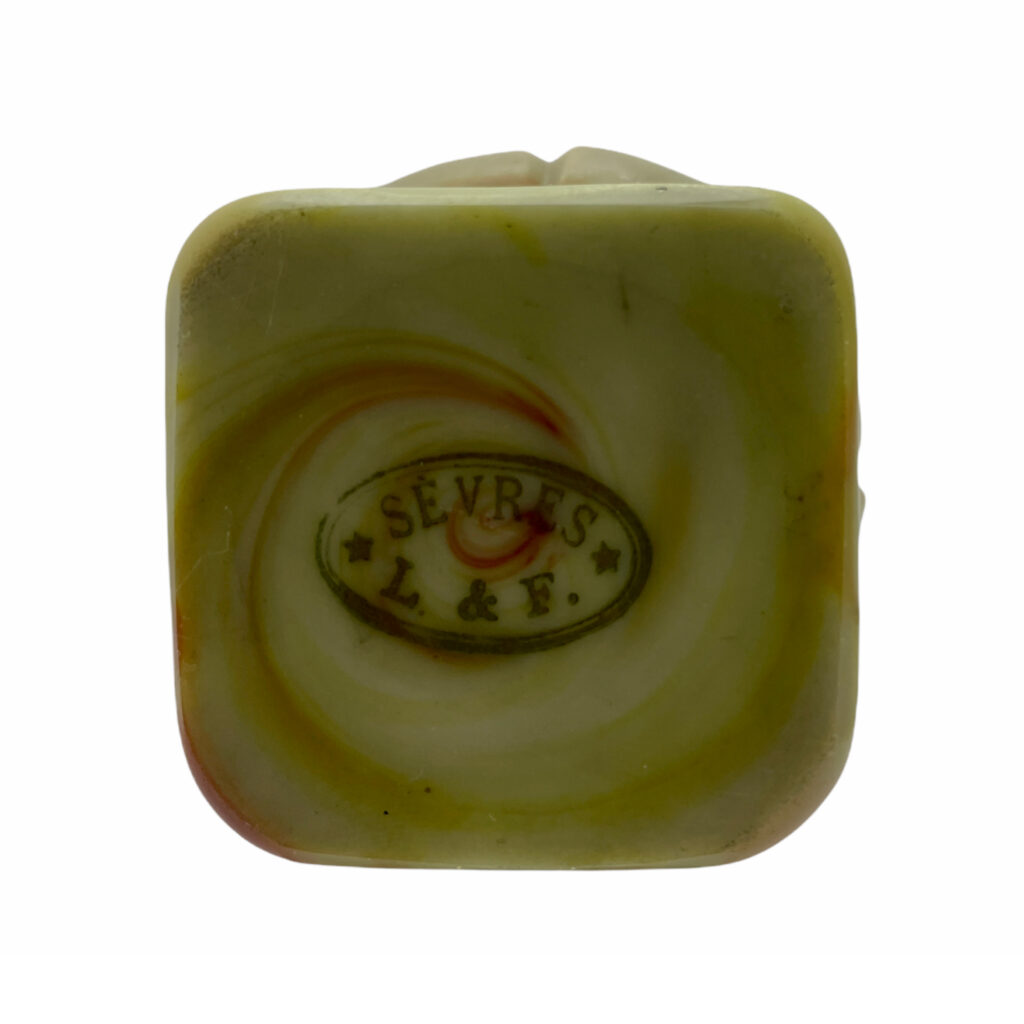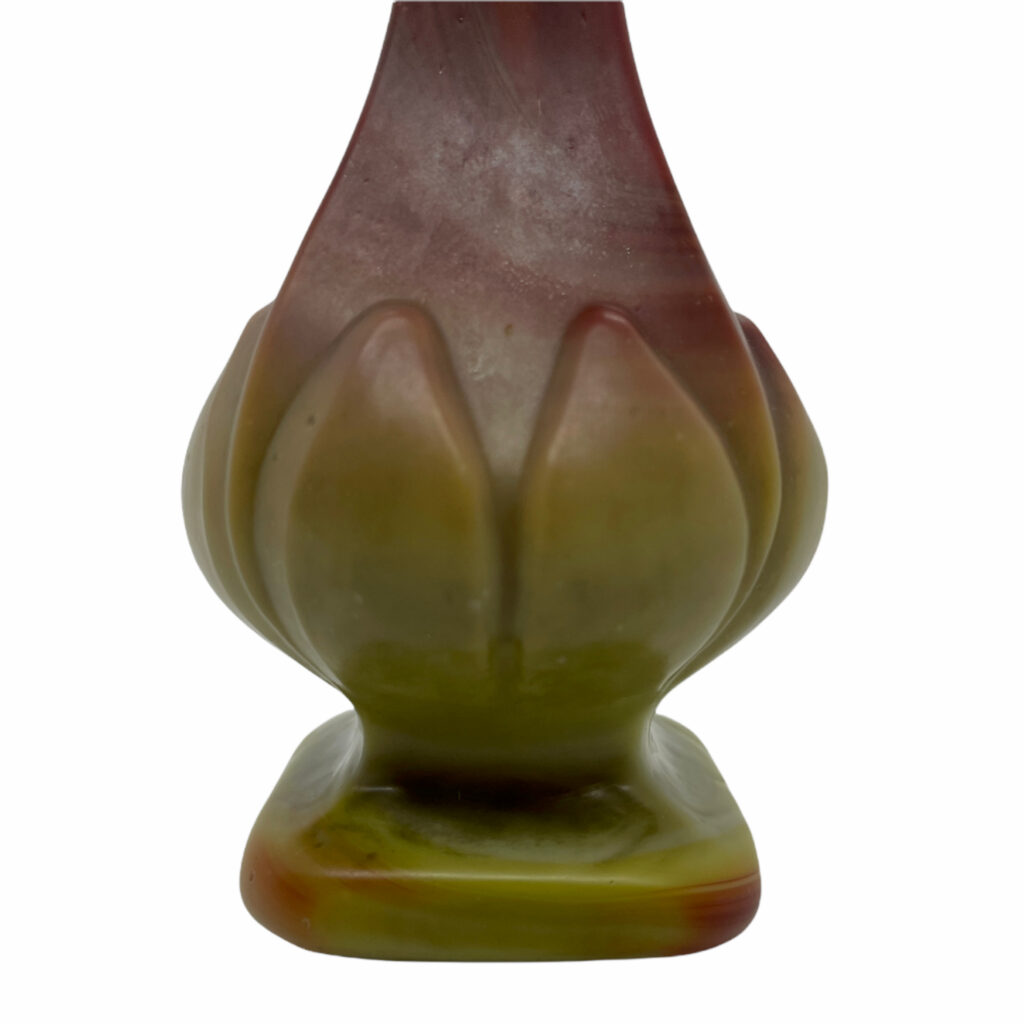
You’ll no doubt know that I’m a more of 20th century boy in terms of my personal collecting habits. My tastes are much broader, however, but even I was a little surprised when I bought the piece below from my friends the top French and Bohemian art glass dealers M&D Moir at the always-amazing Battersea Decorative Fair today. Friends, family, and the other half were too, exclaiming “But it doesn’t even look like glass..!
But, for me, that’s precisely the point. There are a number of things about this 6in (15.5cm) high mould-blown vase that fascinate me. Firstly, it’s made from a type of glass known as Lithyalin. Imitating precious hardstones such as agate, the marbled and striated Lithyalin was developed in Czechoslovakia by arch-glassmaker Frederick Egermann in the late 1820s. He patented it in 1828, and produced it until the 1840s. It proved popular at the time, and his competitors produced many imitations which continued to be produced on a diminishing scale into the late 19thC. Due to the way the molten glass was mixed, the striations or marbling on each piece are completely unique. Think about mixing up a marble cake in a bowl. I like the way the striations on this example spiral horizontally across the body, which contrasts with the elegant, tall form.


The second interesting thing this about this example is that it’s not Bohemian, but French. The nicely polished pontil mark on the base clearly displays a printed gold ‘SÈVRES * L & F *’ oval mark. So, it was made at the historic Cristallerie de Sèvres glassworks, whose origins date back to 1686. In 1870, the company was rejuvenated by Alfred Landier, who also bought out the Clichy glassworks, famous for their paperweights in the mid-19th century, in 1885.

It’s not at all typical of their production, and has a strong Chinese feel to it due to the form and the lotus-like leaves moulded into the body. As such, it reminds me of the small vases and bowls carved from hardstones such as jade in China for centuries. The exoticism of China and its decorative arts were still enormously popular and influential in the late 19th century, and this vase would have been marketed as part of that look. I’d like to think it would have been bought by a decadent, fin-de siècle boulevardier, and placed in his richly decorated apartment. Delicately flavoured with the scent of an opium pipe, perhaps. Think the Jean des Essientes in Huysman’s book À Rebours, for example.
Finally, I’ve always been fascinated by royal treasuries and cabinets des curiosités, and can happily spend hours poring over complex carvings, random reliquaries, exquisite enamels, and richly jewelled odornments. This curious vase has now been added to my highly watered down version of that. An ancient Chinese hardstone vase that isn’t, and was in fact made in France from a type of glass developed in Bohemia specifically not to look like glass…

